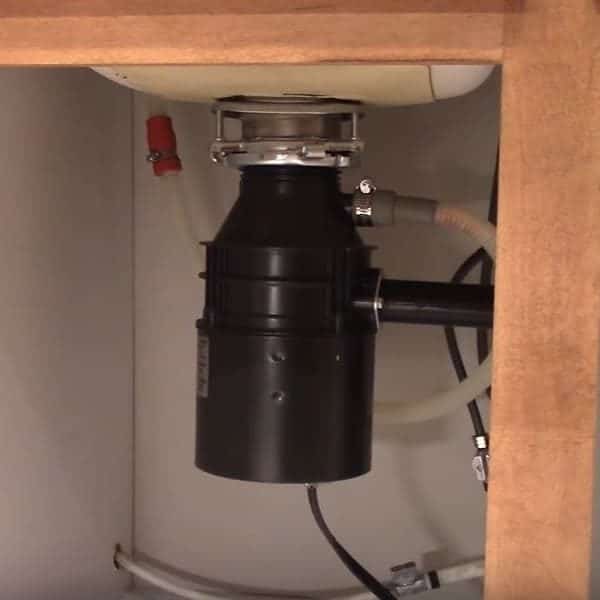
Silverware makes a grating noise sound on contact, causing a jam in the device. When non-food objects come in contact with the garbage disposal, it could damage your disposal. The only thing that should go down the garbage disposal is food. This means larger chunks get through, contributing to disposal clogs and breaking the electrical circuit near the reset switch. When you put too much in the disposal at once, instead of concentrating on chopping only a few items at once, the disposal will do a less-than stellar job at chopping a large portion at once. A second way to tell if you’ve overwhelmed the garbage disposal is seeing a water-food mix backing up into the sink. One way to tell if your garbage disposal is overwhelmed is if no food is moving around inside when you peek inside the disposal with a flashlight.

An overwhelmed garbage disposal makes a humming noise. Testing and pushing the unit's limitations will overwhelm it. Too Much Too FastĪnother misconception - the garbage disposal can handle tons of food at once. Starchy vegetables like beans and potato peels create a thick paste similar to grease, fat, and oil when hardened. Coffee grounds and eggshells grind into granules that are tiny and sticky, making it easy to reach small areas and cause issues. Prevent the passage of food and water: Grease, fat, and oil harden and clog the disposal and drain.

Wrap around the blades and prevent easy movement: Stringy items like pasta, celery, asparagus, corn husks/silk, lettuce, and banana peels will keep the disposal from properly working. Hard to chop: Bones, pits, corncobs, seeds, and ice cubes are too difficult for a garbage disposal to handle. One common misconception about garbage disposals is they can handle any food you stuff inside, including all food parts. Food is one reason, but it’s not the only reason. If that plastic plug isn't popped out, then the dishwasher won't drain and the water will pool back into the dishwasher.It's important to understand the cause behind a clogged garbage disposal so you can properly address the issue. The port on a new garbage disposal will have a plastic plug inside. The top rubber tube drains the dishwasher into the garbage disposal. What is a knockout plug in a garbage disposal? Inside the garbage disposal, behind this tube mount, is where the knockout plug lives. If this tube is attached already, disconnect it using the appropriate screwdriver for the job. Usually located near the top of the unit is a drainage port where the dishwasher's drainage tube gets attached. Regarding this, where is the plug in a garbage disposal? If a 'broken garbage disposal' that means only that the motor no longer works or the blade doesn't turn, those defects will not affect your dishwasher drain and discharge.
/disconnect_disposal-56a73b9a3df78cf772938120.jpg)

Secondly, can garbage disposal affect dishwasher? Dishwasher discharge of wastewater is often connected through the garbage disposal, as this unit occupies one of the drains of a dual sink. Also have a pair of long needle nose pliers. I usually use a flathead screwdriver with a long neck to remove debris in these. Sometimes you'll find the allen wrench in a little pouch under the sink. On the underside of the disposal there's a place you can insert an allen wrench to break the disposal blades free. Now, either using your hand or needle-nose pliers, reach down through the sink opening and find the plug.īeside this, how do you get plastic out of a garbage disposal? Before long, the plug will fall back into the disposal unit. Move the screwdriver around the perimeter of the plug, tapping all the while with the hammer, so you can cleanly remove the whole knockout plug.


 0 kommentar(er)
0 kommentar(er)
